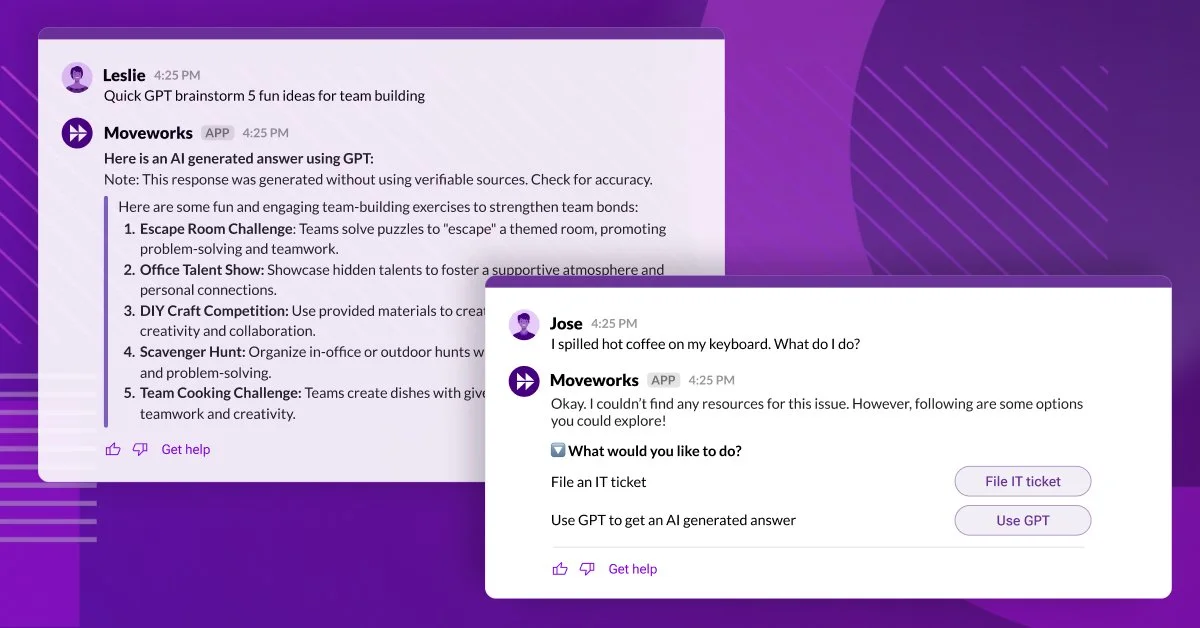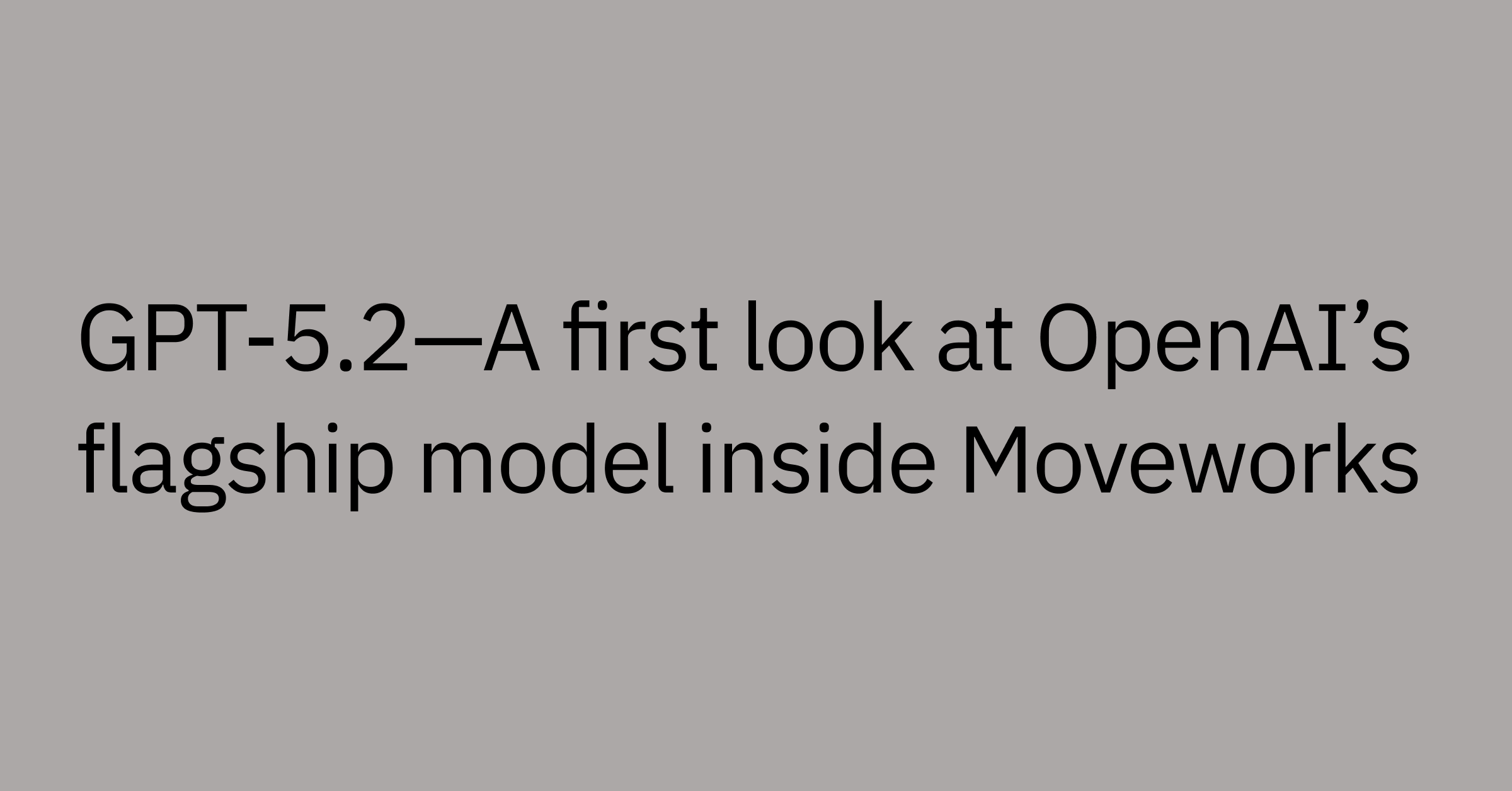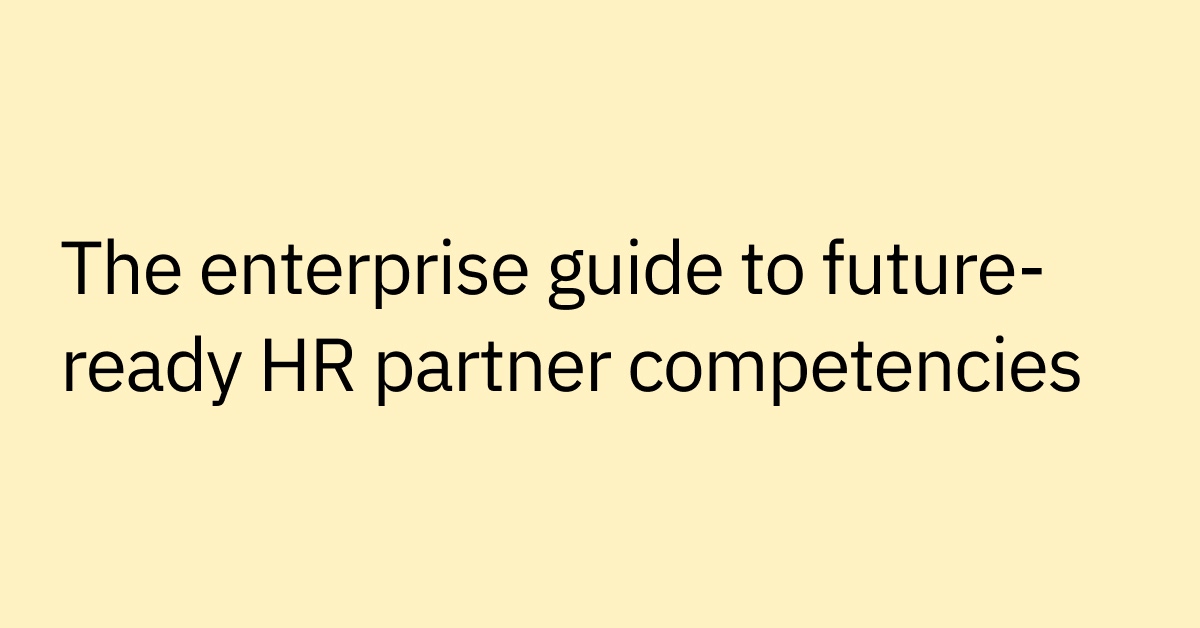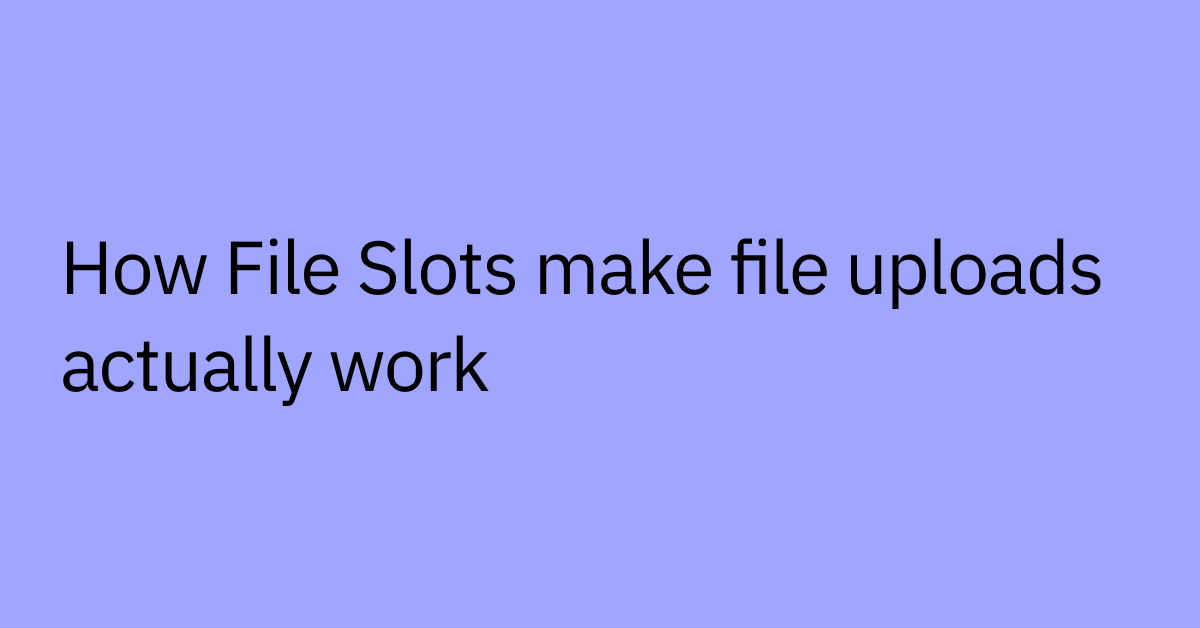Table of contents
The world changed forever the moment ChatGPT was released. Overnight, millions of people gained the ability to quickly generate content, get answers to questions, summarize information, and more — all at no cost. The app set the record for the fastest growing user base ever, and today, depending on their occupation, up to 79% of knowledge workers actively use it on the job.
For businesses, ChatGPT provided a huge opportunity as a productivity booster for employees. Research by MIT estimates that using the application increases productivity by 37%, and decreases time spent on specific tasks by 80%. Organizations hit critical roadblocks when applying this consumer facing tool to enterprise challenges:
The chaos of unending app sprawl
It’s no secret that work today is varied: it involves touching dozens of business systems to complete a wide assortment of tasks. Employees might head to a knowledge base or a shared drive to look up internal information. Other times, they’re submitting a PTO request or filing an IT ticket, which requires them to go to a system of record like an ITSM, HRIS, ERP, or CRM.
For more general tasks such as researching information, fostering creativity, or generating content, employees rely on additional tools, like ChatGPT. App sprawl results in decreased focus and added friction. Employees shouldn’t need to choose between tools, or even know which tool is best fit for each specific task — what they need is a powerful AI assistant that’s able to service a wide variety of everyday use cases regardless of team or function.
The exposure of sensitive enterprise information
Almost immediately after ChatGPT’s launch came reports of knowledge workers entering sensitive data into the interface, essentially exposing proprietary information like code, financial projections, meeting minutes, and more. As an example, one employee converted a smartphone recording of a company meeting to a document file and entered it into ChatGPT to get meeting minutes.
Many organizations, including giants across industries like Apple, Accenture, Wells Fargo, and Northrop Grumman, reacted by banning the use of ChatGPT by employees entirely. While this was a natural and reasonable response at the time, it’s not a long-term solution.
The lack of governance and analytics
The independent, unsanctioned use of ChatGPT by employees skirts the ability of enterprises to enforce proper governance standards upon its use. This leaves companies in the dark on how it's being leveraged and exposes them to additional risk.
With the rollout of any technology solution comes the need for governance. This ensures a smooth implementation process to enforce and uphold established standards, security policies, and compliance requirements. It facilitates clear communication, sets expectations for usage, and identifies critical roles and responsibilities, thereby mitigating risks associated with data breaches, misuse, and inefficiencies. It also fosters an environment of continuous feedback and improvement to adapt to an organization’s changing needs.
The challenge of adoption
Homegrown versions of ChatGPT for employees do solve many concerns: these solutions are more secure and can be customized to your business data. Take, for example, a HR employee processing an adjustment to an employee’s benefits. It requires looking up the specific policy, updating the business record in the HR system, and then drafting a message that confirms the update.
That workflow requires three separate systems, each with a specific purpose, to complete the task. So the app sprawl problem remains where every system has to compete for attention and usage. Employees are less likely to adopt homegrown versions of ChatGPT if it’s frictional to use at work and limited certain types of use cases.
The challenge of cost
One solution to the unauthorized usage of ChatGPT by employees is provided by OpenAI itself: ChatGPT Enterprise. But the cost of an additional subscription service can balloon quickly — and becomes hard to justify — when a majority of employees are just using it for basic tasks like content generation, translation, summarization, and simple Q&A.
And while homegrown GPT instances seem much cheaper to operate on the surface (i.e. per query), they may come with hidden or unforeseen costs related to ongoing development, maintenance, governance, and security.
Introducing Quick GPT: Leverage the knowledge and value of foundational LLMs natively in the AI Assistant
To remedy the above roadblocks, and to continue to make the Moveworks AI Assistant the single place for employees to find information, automate workflows and be more productive, we’re introducing the most useful GPT functionalities natively within our AI assistant. Plus, it comes with analytics, superior security, and aims to enable a high ROI.
With Quick GPT, the AI Assistant delivers an even more powerful experience that allows users to get the exact help they need – answers are referenceable and grounded in internal company knowledge, or, they can tap the power of frontier LLMs for general research, content creation, task automation, and more.
Quick GPT boosts employee productivity by expediting access to useful content. It allows for quick access to GPT-4o in the Moveworks AI Assistant that employees use today for enterprise-wide use cases. The key benefits of Quick GPT include:
- One enterprise AI assistant for a wide range of workflows. Quick GPT enables access to GPT capabilities in the same interface powering search and automation across enterprise apps. This streamlines workflows end-to-end in the AI assistant readily available to employees in the surfaces they already use, such as Slack and Teams. This is a productivity boost for employees, alongside native file analysis and calendar management capabilities, to make everyday tasks even more streamlined.
- Stronger controls and oversight for safer use. Built-in tools allow admins to set parameters, work-appropriateness filters and custom topic inclusion/exclusion enables organizations to better manage GPT access and experiences.
- Built-in analytics for transparency and compliance. Admins are able to track query types and usage patterns, supporting internal compliance and offering visibility into how Quick GPT is being harnessed across the organization to accelerate work.
- Enterprise-grade security and AI governance. Quick GPT has a zero-day data retention policy with OpenAI. QuickGPT does not use employee inputs to train global generative AI models nor does OpenAI with their global machine learning models.
How are these benefits made possible? Quick GPT manifests within the Moveworks AI Assistant in two ways:
1. Quick GPT as a backstop
This manifestation of Quick GPT is all about helping to provide answers to questions when curated sources within your organization (like knowledge articles) are not able to help. Moveworks prioritizes answers based on verified, business-curated information from your enterprise systems before offering information from general knowledge contained within LLMs.
This “backstop” approach aims to minimize the risk of unverified information reaching employees, as it requires users to explicitly opt-in before getting GPT-generated information via a button. As a backstop, Quick GPT will be able to service use cases like:
- Help! I just spilled a large iced coffee on my keyboard. What can I do?
- How can I set up my workstation in the most ergonomic way?
- What are some team building activities I should consider for the new year?
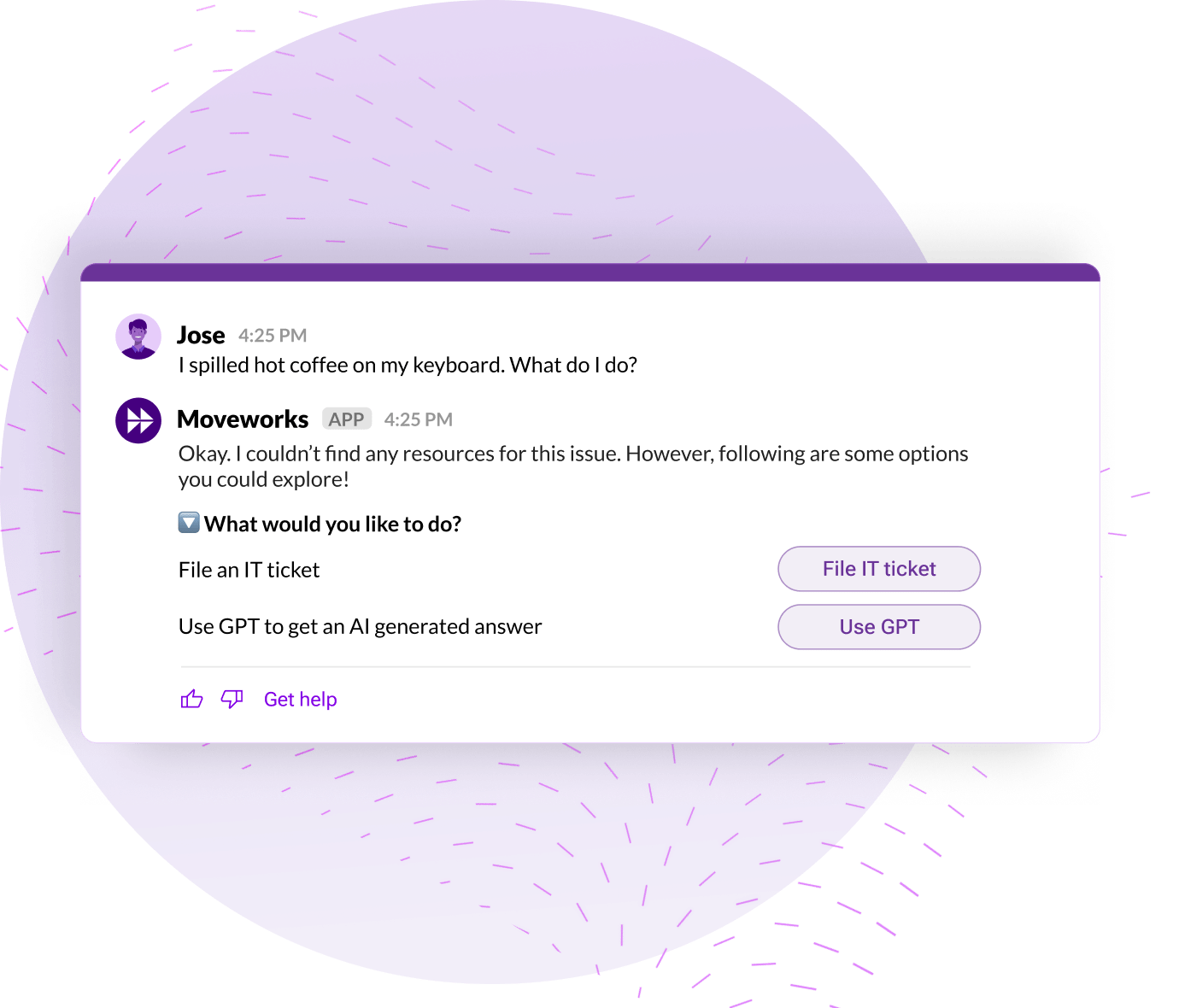
2. Quick GPT as an invokable plugin
This manifestation of Quick GPT is all about being an invokable tool for employees to use at will. With it, users can instruct Moveworks to use GPT-4o to generate responses, rather than needing to consult internal sources.
Employees simply use a command to leverage GPT as a plugin for a variety of use cases:
- Quick GPT draft a blog outline for a topic I want to write about
- Quick GPT write me an email to a vendor inquiring about their return policy for businesses
- Quick GPT give me some ideas for an employee going away party
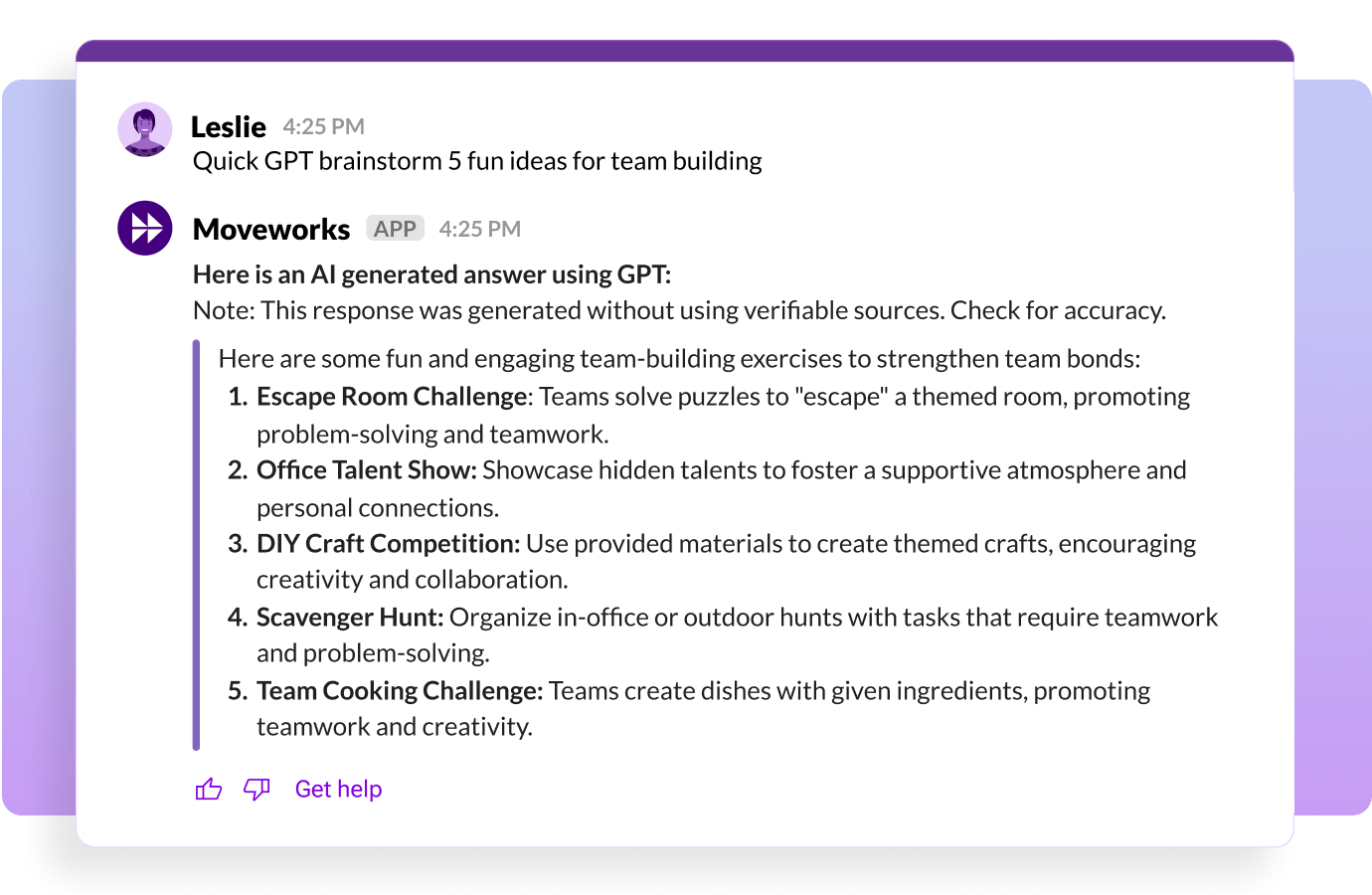
Together, these manifestations enable Moveworks to boost employee productivity by expediting access to useful content, unlocking a variety of use cases for teams across your organization, such as:
Department | Benefits |
Sales |
|
Marketing |
|
HR |
|
Engineering |
|
Legal |
|
Customer support |
|
Quick GPT streamlines everyday tasks across the enterprise
Boosting productivity, cutting the busy work, and empowering employees to focus on their work is what truly matters for leading organizations. With the addition of Quick GPT to our agentic AI Assistant, Moveworks continues to build a powerful, and seamlessly deployed solution for automating employee support in the market today.
Curious to learn more? Join us on March 6 in a product webinar to see Quick GPT in action.
